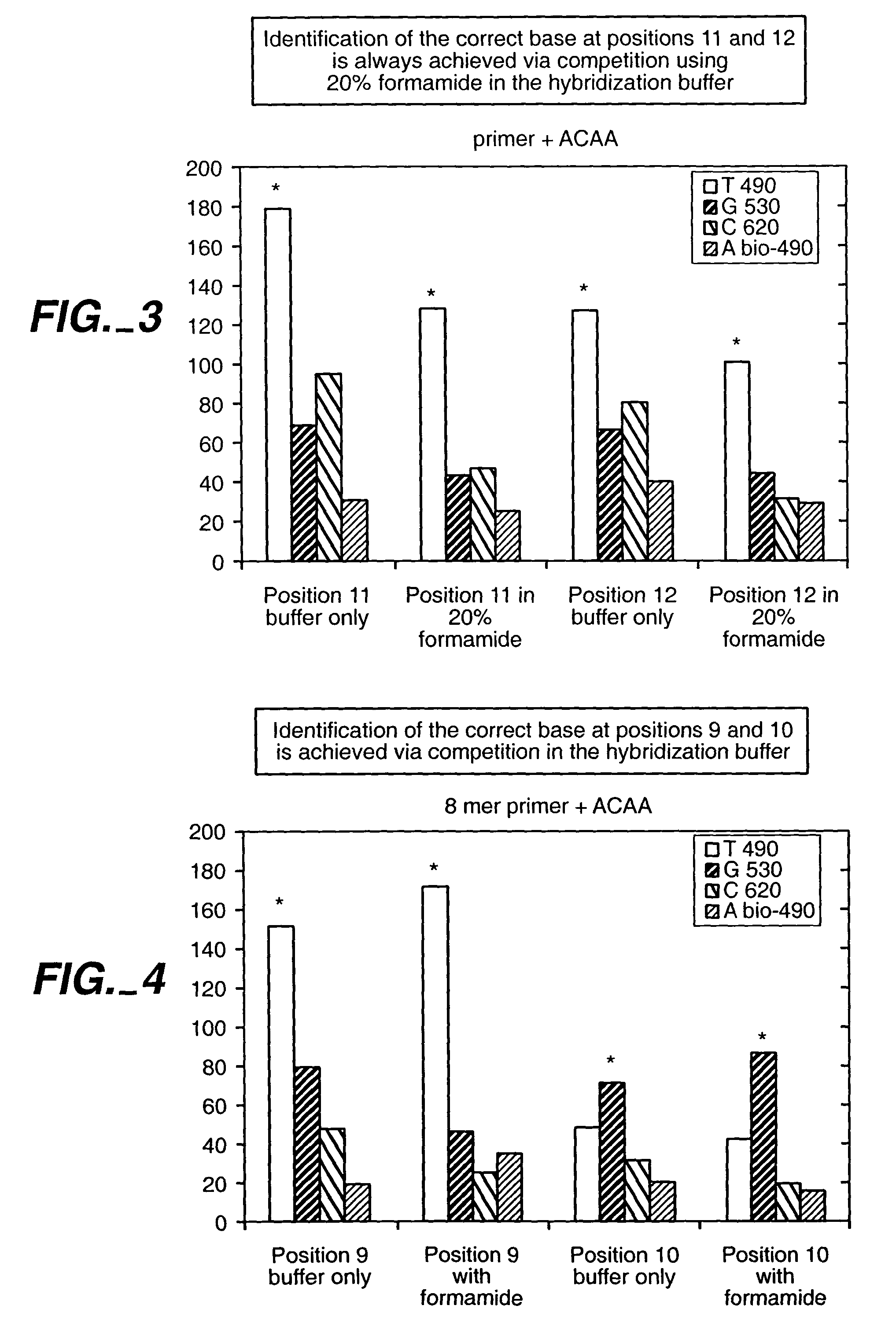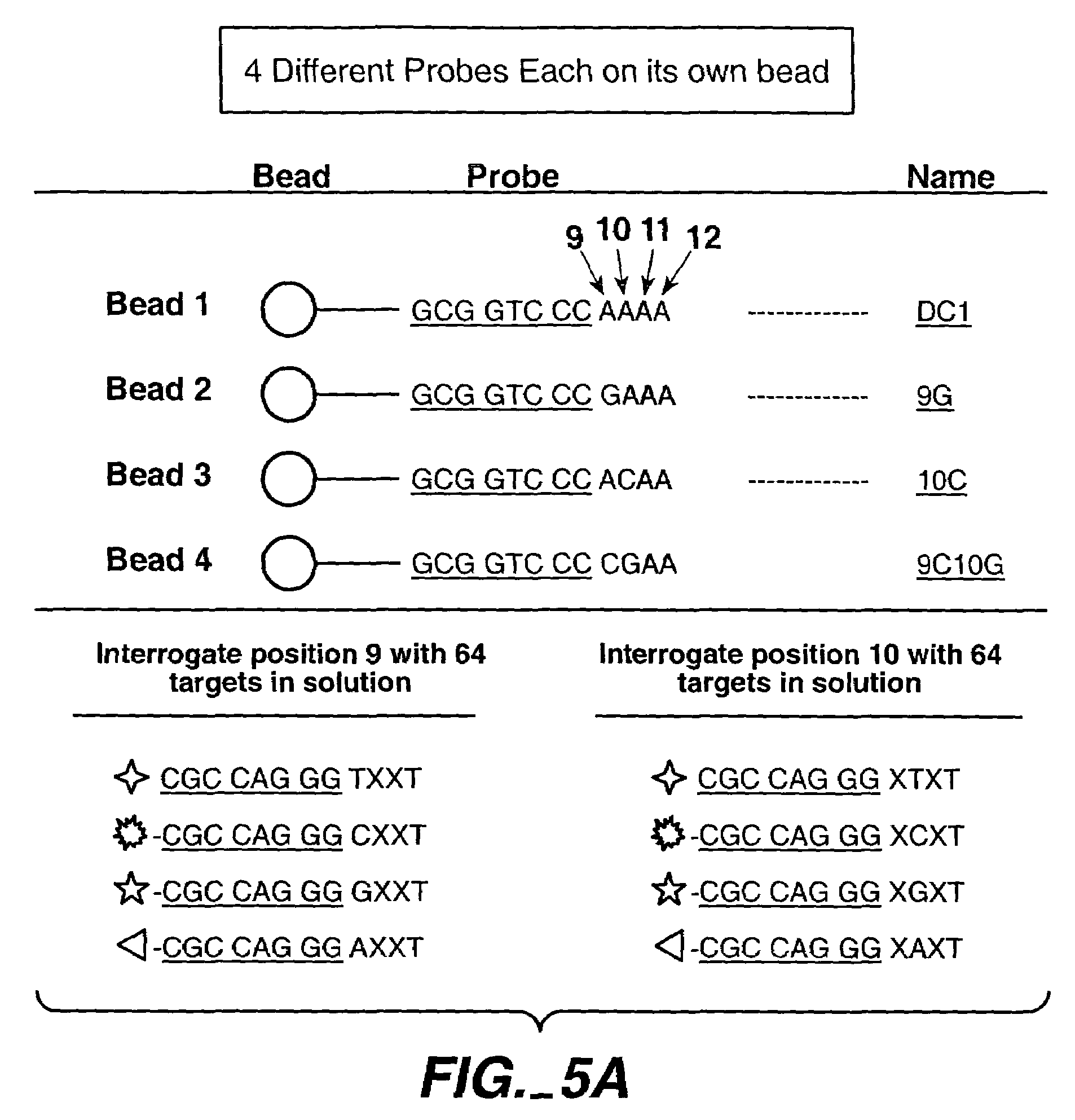Combinatorial decoding of random nucleic acid arrays
a technology of random nucleic acids and decoding methods, applied in the field of compositions and methods for decoding microsphere array sensors, can solve the problem of requiring a set of unique optical signatures
- Summary
- Abstract
- Description
- Claims
- Application Information
AI Technical Summary
Benefits of technology
Problems solved by technology
Method used
Image
Examples
example
Example 1
[0201]Identification of sequence on beads.
[0202]The anchor consists of the following 8 mer:
[0203]
3′-NH2-G GAG CTG G-5′
[0204]The probe consists of the anchor+4 bases. The 4 base sequence used is AAAA. The probe is attached to the bead at the 3′ end.
Targets
[0205]The target consists of the anchor's complement+4 bases: 5′-dye-CCTCGACC+XXXX−3′ (SEQ ID NO: 39). The dye is attached to the 5′ end of the probe. The target mixture contains all 64 possible targets. Briefly: there are 4 solutions each containing 16 targets. Each of the 4(16) target solutions has a different dye label and the base applied at, e.g., 9 is known. Once the 4 target solutions are mixed (named, e.g., Mx9), the total target number is 64.
Dyes
[0206]The 4 labels used in the experiment include: Cy5 (620 / 700), Cy3 (530 / 580), Fluorescein (495 / 530), Biotin (secondary reaction with F1-Streptavidin (495 / 530).
Experimental
[0207]Making Target Solutions in Buffer
[0208]The stock target solutions (16 targets) are diluted to ...
PUM
| Property | Measurement | Unit |
|---|---|---|
| sizes | aaaaa | aaaaa |
| sizes | aaaaa | aaaaa |
| sizes | aaaaa | aaaaa |
Abstract
Description
Claims
Application Information
 Login to View More
Login to View More - R&D
- Intellectual Property
- Life Sciences
- Materials
- Tech Scout
- Unparalleled Data Quality
- Higher Quality Content
- 60% Fewer Hallucinations
Browse by: Latest US Patents, China's latest patents, Technical Efficacy Thesaurus, Application Domain, Technology Topic, Popular Technical Reports.
© 2025 PatSnap. All rights reserved.Legal|Privacy policy|Modern Slavery Act Transparency Statement|Sitemap|About US| Contact US: help@patsnap.com



